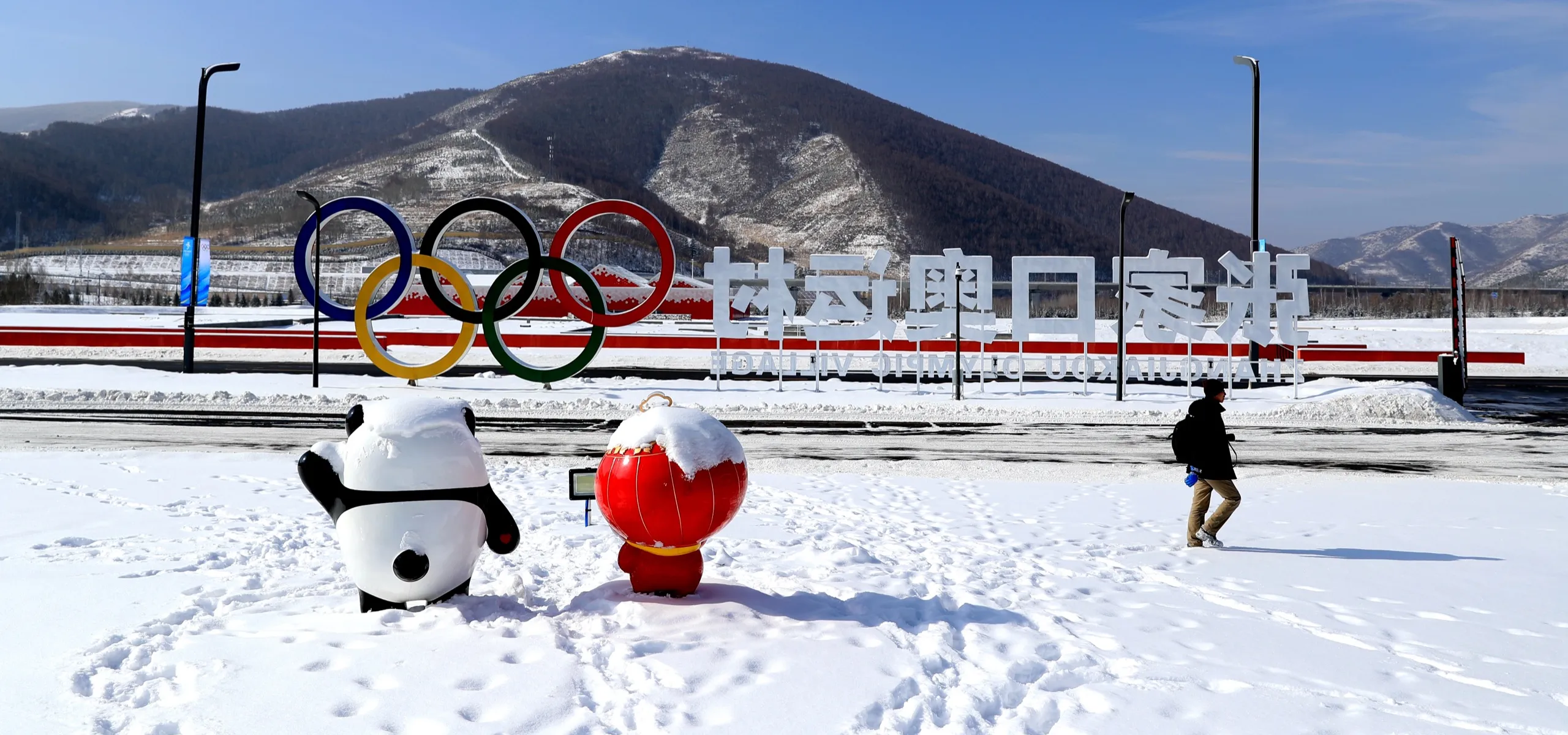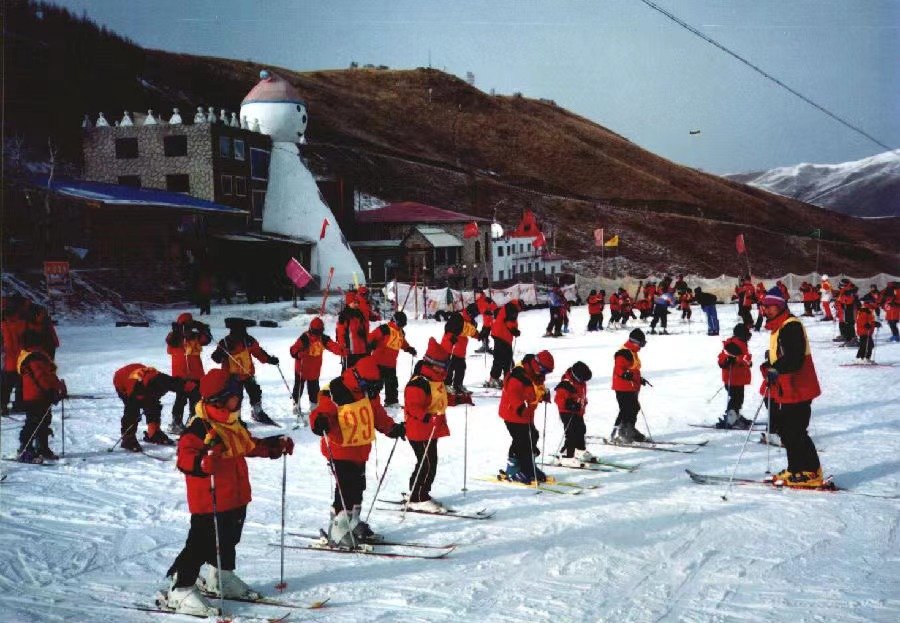“`
# Exploring Zhangjiakou’s Winter Sports History and Cultural Roots

Welcome to Jusha Travel, your go-to source for uncovering the hidden gems of China! If you’re a traveler eager to dive into Zhangjiakou’s Winter Sports History and explore its rich tapestry of culture, you’re in for a treat. Nestled in northern growthHebei Province, Zhangjiakou has transformed from a remote mountain area into China’s premier winter sports destination, especially after hosting events for the 2022 Winter Olympics. This evolution not only highlights China’s sports culture but also weaves in fascinating elements of Zhangjiakou’s cultural heritage, making it a must-visit for those on China cultural tours. Here at Jusha Travel, we love sharing tips to make your China journey unforgettable, so let’s lace up our boots and explore how winter sports have shaped this vibrant region.
## From Humble Beginnings to Ski Hub

Long before Zhangjiakou became synonymous with snowy slopes and Olympic glory, it was a place where winter meant survival rather than sport. The roots of Zhangjiakou’s Winter Sports History trace back to the pre-1990s, when skiing was virtually unknown in this rugged landscape. Local communities focused on traditional livelihoods, such as herding and farming, with little exposure to recreational winter activities. This changed dramatically with the opening of the Saibei Resort in Chongli in 1997, marking the dawn of modern winter sports in the area. As detailed in a fascinating article on [Remembering Saibei, one of China’s first ski resorts](https://www.theworldofchinese.com/2022/02/vanished-mountain-zhangjiakous-first-ski-resort/), this resort introduced skiing to Chinese audiences and sparked the first wave of enthusiasts, blending China’s sports culture with the region’s natural beauty.
This period represents a pivotal shift in Zhangjiakou’s cultural heritage, as ancient customs began to intersect with new recreational pursuits. For instance, the area’s nomadic traditions and folk festivals, which celebrate the harsh yet beautiful winters, found a new counterpart in skiing. Imagine wandering through the snow-capped mountains, where you might stumble upon cultural sites like the Great Wall’s remnants in nearby Badaling, offering a glimpse into imperial history while you warm up from a day on the slopes. For travelers interested in Cultural attractions in Zhangjiakou, this fusion creates an immersive experience—think participating in local winter festivals that incorporate traditional music and dance with modern ski demos. A practical tip: If you’re planning a trip, pack layers for the chilly weather and consider joining a guided tour to learn about the area’s ethnic minority influences, such as the Mongolian heritages that have shaped Zhangjiakou’s cultural heritage. This blend not only enriches your visit but also aligns with the ethos of China cultural tours, where history and adventure go hand in hand.
## The Olympic Legacy and Rapid Growth

The real turning point in Zhangjiakou’s Winter Sports History came with Beijing’s successful bid for the 2022 Winter Olympics in 2015. This event catapulted the region into the global spotlight, fostering a massive influx of investment and infrastructure that transformed Zhangjiakou into a world-class winter sports hub. As outlined in [Co-host Zhangjiakou benefits from Winter Athletics legacy](https://global.chinadaily.com.cn/a/202203/02/WS621ecba6a310cdd39bc89b96.html), the Olympic preparations led to the construction of state-of-the-art facilities, including the high-speed rail from Beijing, which cut travel time to under an hour. This accessibility has made Zhangjiakou a favorite for Beijing residents and international visitors alike, boosting China’s sports culture on a national scale.
The surge in popularity is staggering—between 2015 and 2021, the number of Chinese participants in winter sports jumped to 346 million, reflecting a broader cultural shift towards embracing outdoor activities. Key sites like the Genting Snow Park and the National Biathlon Centre in Chongli hosted thrilling events, drawing athletes from around the world and leaving a lasting legacy. For culture enthusiasts, this era has intertwined Zhangjiakou’s cultural heritage with modern spectacle; for example, Olympic venues now host community events that celebrate local traditions, such as bonfires and storytelling sessions under the stars. An interesting fact: China’s push for winter sports innovation has led to advancements in snowmaking technology, with companies like TechnoAlpin setting up operations here, merging China’s sports culture with cutting-edge tech.
If you’re a traveler, consider timing your visit during the off-peak seasons for fewer crowds and better deals on accommodations. Zhangjiakou travel guide essentials include renting gear from local outfits for an authentic experience, and don’t miss the opportunity to try regional specialties like mutton hotpot to refuel after a day of skiing—it’s a delicious nod to northern Chinese cuisine that perfectly complements your adventure.
## Cultural Attractions and Heritage in Zhangjiakou

Beyond the slopes, Zhangjiakou’s cultural heritage offers a treasure trove of attractions that make it a standout on China cultural tours. As explored in [Research on the Promotion Path of Zhangjiakou Sports Culture](https://ojs.bbwpublisher.com/index.php/ssr/article/view/5650), the region’s winter sports boom has revitalized interest in its historical roots, from ancient Silk Road trading posts to the Mongol-influenced architecture in places like Zhangbei Grassland. These sites provide a fascinating contrast to the high-energy vibe of ski resorts, allowing visitors to appreciate how China’s sports culture has evolved alongside centuries-old traditions.
One highlight is the Taizicheng Area, which served as an Olympic hub and now features interactive exhibits on local history, including displays of traditional winter survival techniques used by indigenous communities. For those curious about Cultural attractions in Zhangjiakou, a visit to the Wanlong Ski Resort isn’t just about shredding powder; it’s an chance to engage in cultural workshops on topics like the area’s ethnic festivals, which often include performances of Mongolian throat singing and folk dances. An insightful fact: The integration of technology in tourism, such as apps for virtual tours of historical sites, exemplifies China’s innovative spirit, making it easier for travelers to connect with the past while enjoying modern amenities.
Practical advice for your trip: Opt for a guided Zhangjiakou travel guide tour that combines skiing with cultural visits, ensuring you don’t miss gems like the Jimingyi Ancient Town. And if you’re a foodie, sample local delicacies such as roasted lamb kebabs, which tie into the nomadic heritage and provide a warm, flavorful respite from the cold.
## Practical Travel Tips and Modern Legacy
While we’ve delved into history and culture, no Zhangjiakou travel guide would be complete without tips for a seamless visit. As detailed in [Zhangjiakou: A Guide to China’s Winter Sports Capital](https://us.trip.com/blog/zhangjiakou-ski-travel-guide/), the city’s modern ski resorts like Thaiwoo and Wanlong offer something for everyone, from beginner slopes to advanced terrain. This growth has cemented Zhangjiakou as a pillar of China’s sports culture, with its industrial parks producing high-quality gear that supports global winter sports.
The economic and social transformations are profound—thousands of jobs in hospitality and manufacturing have emerged, fostering a vibrant community around winter activities. For travelers, this means access to diverse experiences, such as eco-tours that highlight sustainable practices in snowmaking technology. To make the most of your trip, book accommodations near the resorts for convenience, and consider winter packages that include cultural tours to fully immerse yourself in Zhangjiakou’s cultural heritage.
In conclusion, exploring Zhangjiakou’s Winter Sports History reveals a captivating story of transformation, where ancient traditions meet modern thrills, all set against the stunning backdrop of China’s northern landscapes. From the early days of Saibei Resort to the Olympic-fueled boom, this destination embodies the spirit of China’s sports culture while preserving its rich cultural heritage. Whether you’re seeking adventure on the slopes or cultural insights at historical sites, Zhangjiakou offers an unforgettable journey that inspires and educates.
Here at Jusha Travel, we’re passionate about guiding you through the best of China, so if this post has sparked your interest, head over to jusha.travel for more in-depth guides and tips. We’d love to hear your thoughts—share your Zhangjiakou experiences in the comments below, or explore related articles like our guides to other cultural hotspots. Safe travels and happy exploring!
“`




